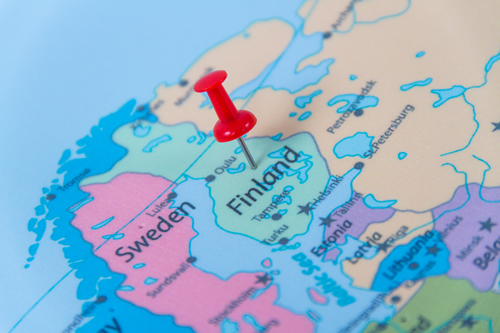Shorter days, less homework, and better results. How do you get that? Do like the Finns. For those in the know, the Finnish system is often seen as the pinnacle of how to do education.
We’ve seen a huge rise in teacher mental-health issues and high levels of teachers leaving the field. One of the main reasons people look to Finland for inspiration is because of its high level of teaching. Realistically it is so advanced because of the expert training teachers receive, and because they are allowed to do their job without much interference.
As a Finnish-based entrepreneur in the business of creativity and innovation within the media industry for more than two decades, I’ve recently turned my focus on how to scale innovation within the education sector. Education innovations are siloed and practiced in isolated classrooms; that’s why my latest project, HundrED, is a nonprofit that’s on a mission to change this by seeking and sharing some of the world’s most inspiring K-12 innovations and packaging them online for educators to easily implement with 24/7 support for free.
Our organization’s aim is to make everything beautiful and understandable, so that any teacher in Manchester, Bangladesh, Singapore, or San Francisco can have access to the best education innovations globally. When we first started building HundrED, the initial goal was to discover and share, 100 Finnish education innovations as part of our country’s 100-year independence from Russia. In observing the research, here are four key takeaways and best classroom practices that all educators can learn from.
(Next page: What we can learn from the Finns)
1. Focus on the teacher.
First and foremost, focus on the teachers. In Finland, a teaching degree is a five-year program focused on the art and science of teaching. Once completed, teachers are seen as experts. Each year, there is one compulsory in-service training to encourage evolution and development. There’s a trust there that in turn empowers teachers to be creative and take ownership of their work. Unlike most countries, physical touch is allowed between teachers and students. A teacher is allowed to pick up and console an upset child. In most places, this is banned for safeguarding reasons. This controversial difference shows the level of trust there is in Finnish teachers.
2. Ensure equality.
Lunches, school supplies, and the commute to school are all free to make education accessible to all. All schools in Finland follow the same curriculum, providing equal opportunities for everyone. Higher education is also free compared to the large debts students incur in countries like the United Kingdom and the United States. Students are allowed to attend and re-attend as many times as they want and are encouraged to pursue any career they choose.
3. It’s how we learn, not what we learn.
Finland’s national curriculum was recently restructured to focus more on students playing an active role in their own learning. The updates included contemporary approaches to improve the culture of operation and leadership. This move emphasizes the student’s right to an individual and holistic education.
The Finnish core curriculum is:
• Thinking and learning.
• Cultural competence, interaction and expression.
• Looking after oneself, managing daily activities, and safety.
• Multiliteracy.
• Information- and communications-technology competence.
• Competence required for working life and entrepreneurship.
• Participation, empowerment, and responsibility.
Finland’s focus is to instill lifelong interdisciplinary skills. Subjects are tailored to be relevant to life. Plus there is a heavy emphasis on self-assessment, as assessment methods are made to support the learner’s development.
One of HundrED’s top Finnish-based innovations that can easily be implemented for free in any classroom and supports this new kind of learning and assessment culture is The House of Learning. It was developed as a concrete pedagogical tool for learning a new assessment culture, for both the teacher and the student.
In The House of Learning, each student practices planning and tracking his or her own learning and developing self-assessment skills. A personalized learning path can be created under the guidance of a teacher and supported by guardians, all the way from pre-school to the last year of elementary school.
Plus, the pedagogical tool can be used to achieve a single subject’s objectives, transversal competences, for assessment, as well as making learning processes of multidisciplinary modules visible.
4. Focus on collaboration.
Teachers are responsible for creating a sense of community in the classroom. They are encouraged to design lesson plans together and co-teach regularly. The curriculum has been updated to include a supportive framework for teachers.
Teacher training was also adapted. Coding and social sciences, especially social justice, are now part of the student teaching program.
What we can learn from Finland
Ultimately, it all comes down to trust. Teachers are driven by the freedom to curate their own teaching methods. Trust allows teachers to concentrate on the job in front of them, to cater to each individual child and prepare the next generation for their adult lives.
When you compare the teaching profession with other professions, it is hard to see another position that is under such an intense microscope. Trust allows teachers the freedom to relax and concentrate on the children in front of them, creatively coming up with ways to cater to each child.
At HundrED we believe that the people on the ground will make the change in education. Let’s trust our teachers and empower them so they can do their jobs properly and prepare the next generation for their adult lives.
- 4 ways to encourage play in education - April 25, 2024
- CoSN IT Leader Spotlight: Lisa Higgins - April 25, 2024
- It’s time to pay student teachers - April 25, 2024


